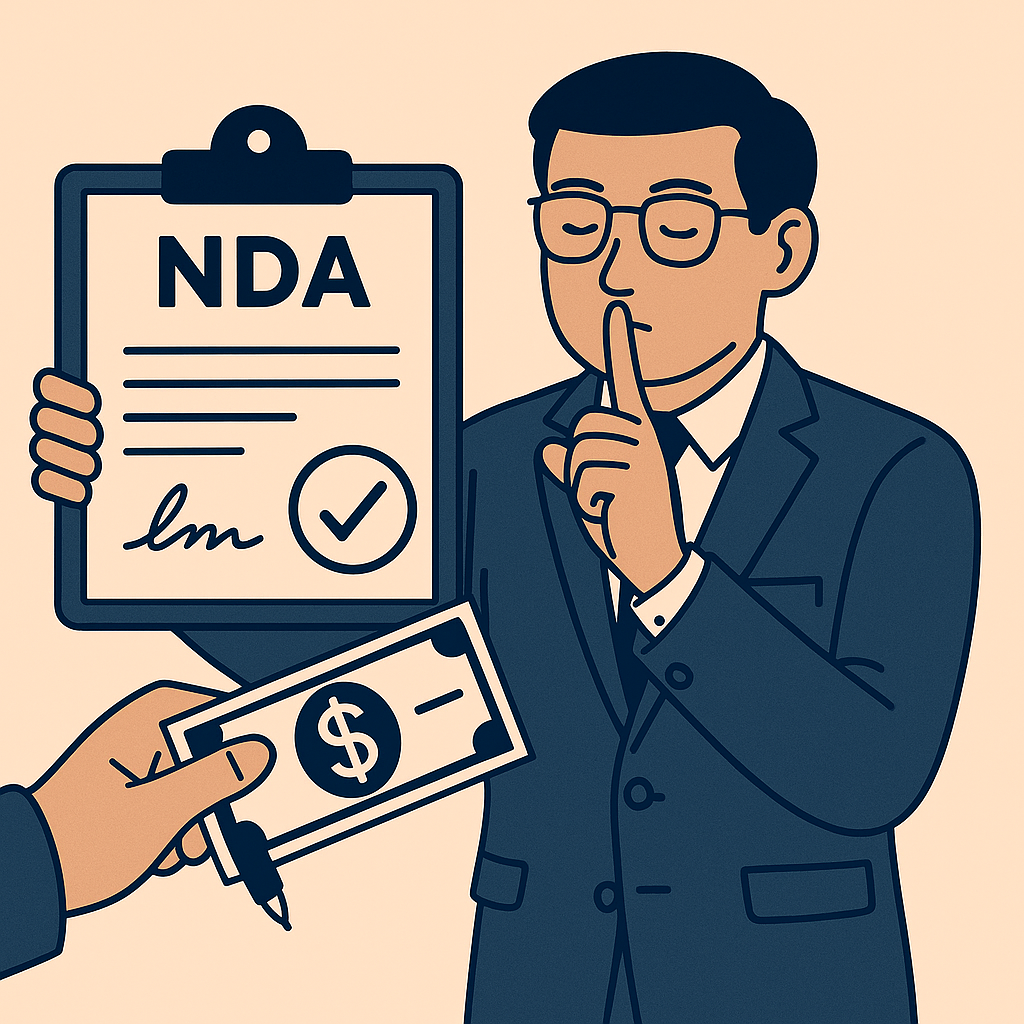Your Secrets, Their Importance: Why Contractual Protection is Non-Negotiable
In almost any business dealing, from hiring an employee or contractor, to engaging a supplier, or entering a potential partnership, you’re likely to share sensitive information. This could be your unique business plans, secret formulas, customer lists, financial data, new product designs, or proprietary software code. This “confidential information” is often a significant part_of your competitive advantage and intellectual property.
Losing control of this information can lead to serious damage: lost market share, reputational harm, or even legal liabilities if the information belongs to your clients. While practical security measures (like password protection and secure servers) are vital, contractual safeguards are your legal frontline for protection when sharing information with third parties. These safeguards are typically enshrined in what are known as “Confidentiality Clauses” or standalone “Non-Disclosure Agreements (NDAs).”
The Cornerstone: Defining “Confidential Information”
The most critical part of protecting your information is clearly defining in the contract what exactly constitutes “Confidential Information.” If it’s not defined properly, it’s hard to protect. A good definition is usually broad but precise.
Common categories often include:
- Technical Information: This can cover everything from software source code, algorithms, product designs, manufacturing processes, R&D data, formulas, and schematics.
- Business Information: This includes financial statements, business strategies, marketing plans, customer and supplier lists, pricing information, employee data, and operational methods.
- Intellectual Property: Information related to patents (before they are public), trade secrets, copyrights, and trademarks.
- Third-Party Information: If you hold confidential information belonging to others (like your clients) that you need to share for the purpose of the contract, this must also be protected.
- The “Catch-All”: Often, a clause will state that any information disclosed by one party (the “Disclosing Party”) to the other (the “Receiving Party”) that is marked “Confidential” or would reasonably be understood to be confidential given its nature and the circumstances of disclosure, is covered.
Equally important is to define what isn’t considered confidential, to avoid overreach:
- Information that is already publicly known (through no fault of the Receiving Party).
- Information that the Receiving Party already possessed before disclosure, without confidentiality obligations.
- Information that is independently developed by the Receiving Party without reference to the Disclosing Party’s confidential information.
- Information1 that is rightfully received by the Receiving Party from a third party who is not under any confidentiality obligation.
- Information that the Disclosing Party agrees in writing can be released.
Core Obligations: What the Receiving Party Must (and Must Not) Do
Once defined, the contract must clearly spell out the Receiving Party’s obligations:
- Non-Disclosure: This is the fundamental promise: The Receiving Party agrees not to disclose the Confidential Information to any unauthorized third party.
- Restricted Use (Purpose Limitation): The Receiving Party must agree to use the Confidential Information solely for the specific purpose outlined in the contract (often called the “Permitted Purpose”). Using it for their own benefit outside this scope is a breach.
- Duty of Care: The contract should specify the standard of care the Receiving Party must use to protect the information. This is often “reasonable care” or “at least the same degree of care as it uses to protect its own confidential information of like importance,” but for highly sensitive information, a “high degree of care” might be stipulated.
- Limiting Internal Access: The Receiving Party should only allow access to the Confidential Information to its employees, officers, or even affiliated companies who have a legitimate “need to know” for the Permitted Purpose. Crucially, these individuals should also be bound by confidentiality obligations no less restrictive than those in the main agreement (often achieved through employment agreements or direct undertakings).
How Long Must Secrets Be Kept? Duration of Obligations
This is a key point of negotiation:
- Fixed Term: The obligation might last for a specific number of years (e.g., 3, 5, or 10 years) from the date of disclosure or from the termination of the main contract.
- Indefinitely for Trade Secrets: Some information, particularly trade secrets (like the Coca-Cola formula), may require confidentiality obligations that last indefinitely, or for as long as they remain trade secrets under law.
- Survival Clause: It’s vital that the confidentiality obligations “survive” the termination or expiration of the main contract. Without this, protection could end when the business relationship does.
When Sharing is Allowed: Permitted Disclosures
There are situations where disclosure might be necessary:
- With Prior Written Consent: The Disclosing Party can always agree in writing to allow specific disclosures.
- As Required by Law or Court Order: If a court or government agency legally compels disclosure, the Receiving Party may comply. However, the clause should require the Receiving Party to:
- Promptly notify the Disclosing Party of such a requirement (if legally permitted to do so).
- Cooperate with the Disclosing Party’s efforts to obtain a protective order or otherwise limit the disclosure.
- Only disclose the minimum information legally required.
- To Professional Advisors: Disclosure to lawyers, accountants, or financial advisors is often permitted, provided they are bound by professional duties of confidentiality or a separate confidentiality agreement.
End of the Road: Return or Destruction of Information
What happens to the sensitive information when the contract ends, or if the Disclosing Party requests it back earlier? The clause should require the Receiving Party to:
- Promptly return all materials containing Confidential Information (including all copies).
- Or, at the Disclosing Party’s option, destroy all such materials and provide a written certification of such destruction.
- Exceptions might include one archival copy retained in secure legal files for regulatory or compliance purposes, provided it is not used for any other purpose.
When Things Go Wrong: Remedies for Breach
If confidential information is misused or wrongly disclosed, the damage can be immense. The contract should outline remedies:
- Injunctive Relief: The clause should state that the Disclosing Party is entitled to seek injunctive relief (a court order to prevent or stop the unauthorized disclosure or use) because monetary damages alone may not be an adequate remedy for the irreparable harm caused.
- Damages: The Disclosing Party can also sue for monetary damages resulting from the breach.
- Indemnification: The Receiving Party might be required to indemnify (compensate) the Disclosing Party for any losses, damages, or legal costs incurred due to a breach of the confidentiality obligations.
Beyond the Paper: Practical Steps for Protection
While a strong contract is essential, don’t forget practical measures:
- Clearly mark documents and digital files as “CONFIDENTIAL.”
- Implement robust internal security policies and IT security measures.
- Train employees and contractors on the importance of confidentiality and their obligations.
- Conduct due diligence on third parties before sharing highly sensitive information.
- Limit the amount of information shared to only what is strictly necessary.
Confidentiality Clauses vs. Standalone NDAs
Confidentiality provisions can be a section within a larger service agreement, employment contract, or business partnership agreement. Alternatively, a Non-Disclosure Agreement (NDA) – also known as a Confidentiality Agreement (CA) – can be a standalone contract used specifically for protecting sensitive information, often before a more definitive business relationship is established (e.g., during initial discussions about a potential merger or collaboration). The core principles and key terms discussed above apply to both.
Key Questions for Your Review Checklist:
- ✅ Is “Confidential Information” defined clearly, comprehensively, and appropriately for what you’re sharing?
- ✅ Are the obligations of the recipient (non-disclosure, limited use, standard of care, internal access controls) strong enough?
- ✅ Is the duration of the confidentiality obligations suitable for the sensitivity of the information?
- ✅ Does the clause adequately cover what happens to the information upon contract termination (return/destruction)?
- ✅ Are the provisions for legally compelled disclosure fair, providing you with notice and an opportunity to object?
- ✅ Are the remedies for breach (especially the right to injunctive relief) clearly stated?
Securing Your Intellectual Capital
In today’s knowledge-based economy, your confidential information is a priceless asset. Taking the time to craft, negotiate, and understand the confidentiality clauses in your contracts is a fundamental step in safeguarding your business’s future. It’s about ensuring your secrets remain secret and your competitive edge remains sharp.
Enhance Your Contract Security with WHYFIRM Smart Contracts
Drafting and managing complex clauses like those for confidentiality requires precision and foresight. At WHYFIRM, our Smart Contract services are designed to help you create agreements that offer robust protection for your valuable information. We leverage technology to build clear, secure, and efficient contracts, helping you minimize risks and manage your contractual relationships with greater confidence and control. Secure your sensitive data and intellectual property effectively with WHYFIRM.

